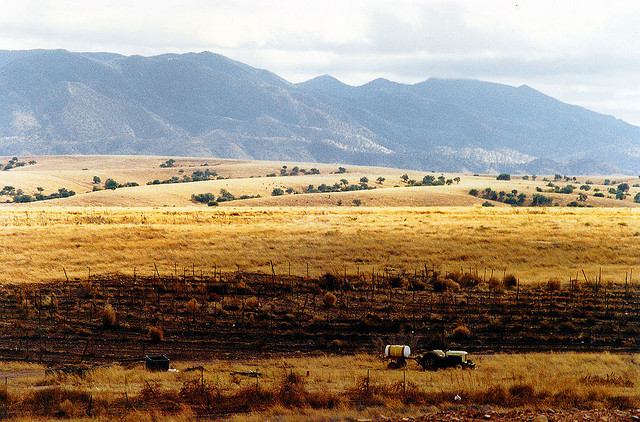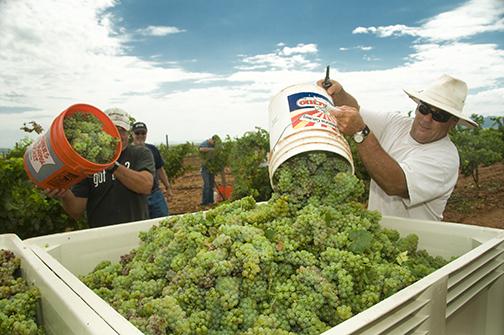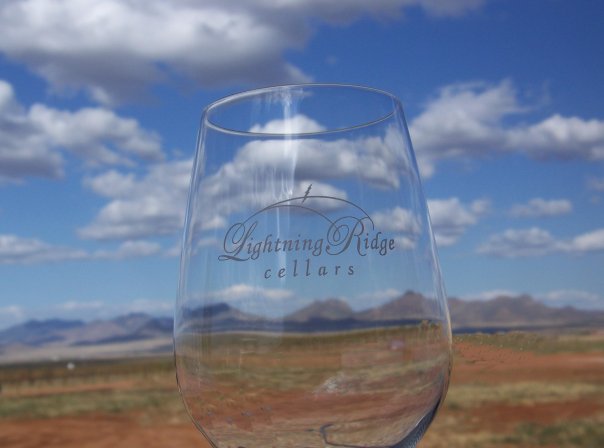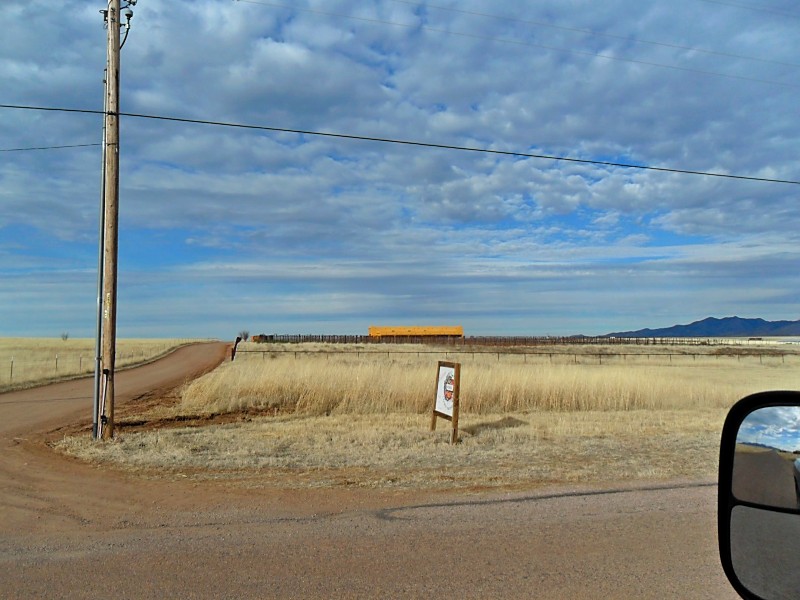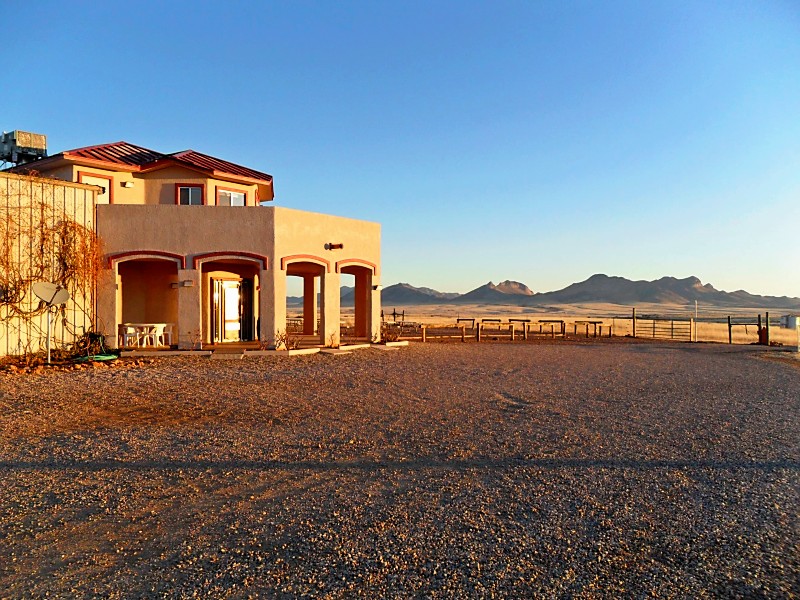When one thinks of wine and where it’s made here in the United States, the popular valleys of California and the Pacific Northwest may tend to come to mind first. However, to many, the last place one might consider the climate and geology to be well-suited for grape-growing and winemaking would be hidden in one of the country’s driest, desert states: Arizona.
(Photo of vineyards around Sonoita thanks to Phillip Capper.)
Surrounded by three substantial Southern Arizona mountain ranges–the Huachuca, Santa Rita and Whetstone Mountains–the Sonoita Valley was found to be a geological sweet spot that has proven to be especially conducive for growing grapes. Moreover, the area’s Mediterranean climate, in addition to being good for winemaking, has proven to be a welcome meteorological shift for most Arizona residents and tourists who are used to the scorching heat and dryness of the state’s sprawling desert regions. As a matter of fact, the difference in climate can be felt almost immediately when traveling the short distance to and from Sonoita and its closest metropolitan neighbor, Tucson viagra achat belgique.
(Harvesting grapes at Sonoita Vineyards.)
The area’s potential for wine-making was first discovered in the early 1970s when Dr. Gordon Dutt and Blake Brophy established an experimental vineyard to study how grapes would grow in the Southern Arizona climate. Expecting the generally harsh heat and sunlight to render the grapes useless, Dr. Dutt was pleasantly surprised when the soil, combined with the elevation and its relatively temperate climate, ended up creating a rare trifecta for Arizona grape-growing.
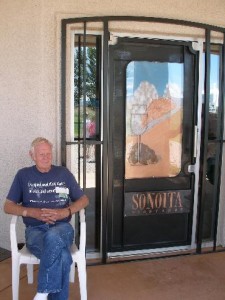 In 1979, Dr. Dutt (left) established Arizona’s first commercial vineyard within the Southern Arizona valley of Sonoita, which was then fittingly named Sonoita Vineyards when its winery opened for business in the early 1980s. The winery saw almost immediate success, with many visitors surprised by the quality of wine that could be produced in a state that was never really known for its agricultural potential–much less for its relevance to the world of winemaking. Sonoita Vineyards, and to a certain extent, the whole of Sonoita Wine Country owes much to Dr. Gordon Dutt for his scientific findings and for bringing the gift of wine and grape growing to Southern Arizona.
In 1979, Dr. Dutt (left) established Arizona’s first commercial vineyard within the Southern Arizona valley of Sonoita, which was then fittingly named Sonoita Vineyards when its winery opened for business in the early 1980s. The winery saw almost immediate success, with many visitors surprised by the quality of wine that could be produced in a state that was never really known for its agricultural potential–much less for its relevance to the world of winemaking. Sonoita Vineyards, and to a certain extent, the whole of Sonoita Wine Country owes much to Dr. Gordon Dutt for his scientific findings and for bringing the gift of wine and grape growing to Southern Arizona.
Although Sonoita Vineyards still stands as the area’s premier vineyard and winery attraction, several other wineries have been vying for that position in the Sonoita Valley for the last several decades. As in most cases, some of the region’s wineries do better than others, and wine tasting continues to make up a large percentage of the sales these businesses make throughout the year. In fact, the number of wineries in the Sonoita/Elgin region remains small enough that you can make a complete tour of the area–with wine tastings and all–within a very reasonable amount of time, and with limited damage to the wallet (that is, unless you are persuaded to buy several bottles of wine, which in many cases, may become simply irresistible).
If I had to choose my two personal favorite Sonoita winery experiences, in addition to Sonoita Vineyards, I would have to choose the spectacular views of the valley and the delicious wines offered by Lightning Ridge Cellars, and the absolute creativity and festiveness of rising star in the wine world, Karel Wilhelm and the Wilhelm Family Vineyards.
Located 5100 feet (1554 meters) above sea level, Lightning Ridge Cellars offers one of the best views in all of Sonoita, coupled with an ideal climate that has boded extremely well for the quality of grapes grown on its extensive vineyard. Founded in 2005 by Ron and Ann Roncone, Lightning Ridge Cellars specializes in producing wines of the Italian variety in 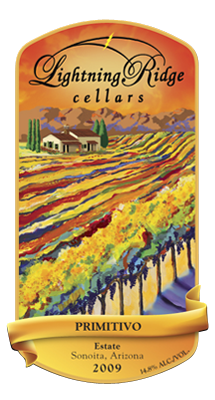 a way that reflects its owners pride in the homeland of their forebears. One gets the sense, when tasting the paradoxically simple yet complex flavors of Lightning Ridge’s Primitivo, for example, that great care and attention to detail is paid to each variety of wine. At Lightning Ridge, it’s evident that making and selling wine is not merely a business exercise, but a lifelong pursuit at understanding how to craft one of the most culturally (and gastronomically) ubiquitous aspects of its owners’ heritage: the perfect glass of Italian wine. Also, did I mention the view? Visitors will find it hard not to be mesmerized by the rolling hills, colorful skies and mountain ranges presented when looking out the window of the winery, or better yet, while standing (or sitting) outside with a nice, soothing glass of Lightning Ridge wine.
a way that reflects its owners pride in the homeland of their forebears. One gets the sense, when tasting the paradoxically simple yet complex flavors of Lightning Ridge’s Primitivo, for example, that great care and attention to detail is paid to each variety of wine. At Lightning Ridge, it’s evident that making and selling wine is not merely a business exercise, but a lifelong pursuit at understanding how to craft one of the most culturally (and gastronomically) ubiquitous aspects of its owners’ heritage: the perfect glass of Italian wine. Also, did I mention the view? Visitors will find it hard not to be mesmerized by the rolling hills, colorful skies and mountain ranges presented when looking out the window of the winery, or better yet, while standing (or sitting) outside with a nice, soothing glass of Lightning Ridge wine.
As you’re looping around on the quiet, country roads that connect many of the wineries in the Sonoita/Elgin area, you’re eventually bound to come across the Wilhelm Family Vineyards. The location (pictured below from the road) is relatively nondescript, tending to blend in with the other homes in the area–a feature which only adds to the casual, home-like ambiance the winery has to offer.
Upon entering the winery, visitors are greeted with a small, but cozy tasting room where the charismatic owner, Karyl Wilhelm, can regularly be seen chatting and sharing her extensive knowledge of winemaking. Wilhelm clearly has a sturdy foundation when it comes to understanding wine and how it’s made, having studied the process at one of the country’s most renowned schools for wine-making at UC Davis. This allows her to be a bit more creative than the average winemaker, and she often showcases her own unique oenological inventions, as well as those of her husband Kevin. Although the selection of wine at Wilhelm Family Vineyards presents a veritable cornucopia of flavor and variety, for the more conservative wine connoisseur, there is indeed a fine selection of more traditional wines crafted by the Wilhelms to near perfection. With a bit of an open mind and a taste for adventure, one surely cannot go wrong at Wilhelm Family Vineyards.
(Sunset at the Sonoita Vineyards winery.)
Despite the area’s potential for becoming one of the better getaway locations in the Southwest, Sonoita and its sister town Elgin still manage to hold onto their slow-paced, tucked-away charm. Thanks to Dr. Gordon Dutt and his invaluable geological research, Sonoita and its environs managed to avoid the bleak fate of residential and commercial development on a scale that would be disastrous to the area’s natural geological splendor. As such, it would seem that drawing crowds and tourists on the scale of world-renowned locations such as the Napa Valley is far from the minds and desires of the residents and wine producers of the Sonoita/Elgin areas. Yet, those who are lucky enough to stumble upon this Southern Arizona wine paradise can expect to have one of the most personable, scenic and delicious wine experiences the state has to offer.
Are you a fan of these vineyards? Have any other attraction suggestions in the Sonoita/Elgin area? Let us know in the comments section, or via our Facebook and Twitter accounts!
